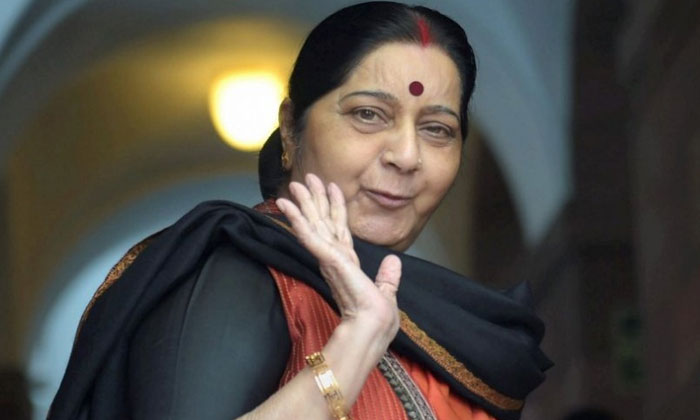Fiery, feisty and indefatigable, former External Affairs Minister Sushma Swaraj, who died on Tuesday, was a leader who fit many roles in her long political leader. She might be remembered best for giving an all-new dimension to the role of foreign minister by being proactive in reaching out to Indians in distress in foreign lands.
But looking back, it was equally important to have contested against Sonia Gandhi in Bellary on the Congress leader”s electoral debut in what was billed as a ”videshi bahu” versus ”bharatiya nari” contest. Bellary was then a Congress safe seat and for the BJP it was important to fight against the then new Congress president because the latter”s foreign origin was an important political issue at the time. Her brief tenure as Delhi chief minister was important too, for she broke a glass ceiling as the first woman chief minister of the state. That was about as important as being the youngest cabinet minister at 25 years in the Haryana cabinet in 1977.

Her proximity to Bharatiya Janata Party stalwart L.K. Advani was what led to her rise. She was one of the four Advani acolytes who came to be known as the D4, the four powerful leaders from Delhi who pretty much dominated the party at the time: Sushma Swaraj, Arun Jaitley, Ananth Kumar and M. Venkaiah Naidu. It was because of the power that they wielded that two of the D4 came to occupy top positions in the party structure when the BJP was in opposition during UPA rule — Sushma Swaraj was leader of the opposition in the Lok Sabha and Arun Jaitley was leader of the opposition in the Rajya Sabha. Being outspoken and clear-headed got her into the headlines. What perhaps contributed to that was her confidence in herself — and that she was never afraid to walk alone. Perhaps that was why she allowed media persons to walk up to her and ask questions.
For her supporters, there might have been mixed feelings about some of the controversies surrounding her — like facilitating the foreign travel documents of former cricket administrator Lalit Modi in 2011 and dancing at Gandhi Samadhi in Rajghat while staging a protest. Her explanations, forceful though they were, had appeared less than fully convincing. She got into a spot of bother when a photograph of her apparently blessing the controversial Bellary brothers appeared in the media. Behind the damage limitation exercise that followed were rumours of her face-off with a prominent party leader because she thought she was taking the fall for someone else”s association with the Bellary duo — that while the BJP leader had backed them, she was being made to look poorly in public because of the photograph. Party insiders say that even though she had moved on from the episode, she never forgave the BJP leader.
Also Read: Sushma Swaraj passes away at 67
Sushma Swaraj might not have been in Prime Minister Narendra Modi”s inner circle but she held her own, often winning praise from the Prime Minister for her role as External Affairs Minister. Delhi”s insidious grapevine had suggested that she was asked to contest for the Lok Sabha this year but she declined, citing health reasons. The truth about that might never be made public. Women politicians, even the fiery among them, often come to be regarded as mother figures in their later years. Sushma Swaraj was no exception and her role as External Affairs Minister endorsed this image of her. But, behind that amiable exterior was a politician of immense caliber and top grade firepower. Indeed, those who saw her for the first time were often surprised that she was not quite tall.
Hours before she passed away, Sushma Swaraj had tweeted her congratulations to the Prime Minister and Home Minister for the decision on Article 370. Here too, she had a role to play — through her speech in the Lok Sabha in 1996 when she spoke on the BJP”s plan to remove Article 370, which is in the party”s core agenda, along with a uniform civil code and building a Ram temple at Ayodhya. For a committed BJP leader, it is likely that she would have been at peace following the government”s decision on the contentious constitutional provision.
IANS













